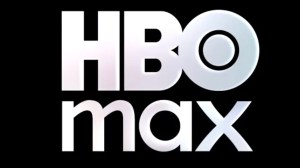MLB originally took over the development rights for R.B.I. Baseball with the intention of revitalizing a title that had entertained fans during the 1980s and have made changes in recent years to improve the presentation, the controls, and the graphics. The goal isn’t necessarily to compete with the simulation experience provided by MLB: The Show; rather, it is to provide an arcade experience that will entertain more casual baseball fans. While it does add new options for pitching and batting in order to add a level of authenticity to the action, the game is unfortunately still hamstrung by the poor artificial intelligence and technical errors.
Videos by ComicBook.com
R.B.I. Baseball 20 relies on five main modes to provide what MLB hopes is an enjoyable baseball experience. Franchise mode gives you control over a specific organization for a 10-season run, including trades, free-agent contracts, and retirements. Those wanting the full experience can play all 162 games in a season, but 81- and 52-game seasons are also available.
If playing a full season is not possible, there is the option of skipping straight to the playoffs. You can select a team from either the American or National Leagues and then guide them to a World Series title. The online mode is the quickest way to compete with other players for bragging rights while the exhibition allows for couch competition. Finally, there is the Home Run Derby. This is, by far, the most enjoyable mode in R.B.I. Baseball 20 and provides the opportunity to stand back and launch baseballs out of the stadium. They do occasionally fly through walls and windows in ghostlike fashion, removing any factor of realism, but smashing baseballs does not grow old.
The game has primarily been viewed as a more casual option for baseball fans, but it does include new camera angles, batting and pitching systems, and individual base-stealing commands. These settings can be changed mid-game and mixed together to provide multiple playstyles.

The primary issue with R.B.I. Baseball 20 is that these changes have not resulted in a smooth or enjoyable experience. The charge system makes it far easier to hit home runs, but it often malfunctions when trying to tap the button for a base hit. The game identifies a tap as an attempted hold and causes the batter to remain motionless instead of swinging, eliciting cries of frustration during close matches.
There are benefits of the new presentation style and camera angles, however. Watching a batter launch a baseball over the wall and arrogantly drop his bat in celebration is oddly satisfying, and it pairs nicely with the pitcher throwing his arms up in frustration. The camera sitting behind the batter also makes it slightly easier to time your swings and makes the game feel like less of an arcade game.
But the game tends to briefly freeze between each pitch, especially if you hold down the charge button too quickly. This problem is not prevalent in every single inning but does tend to increase in frequency with extended playtime. Of course, the freezing issue provides more time to notice the various graphical glitches. Batters have two shadows, both behind and in front of them even during night games. The pitchers also tend to float above the ground when using the “classic” batting mode, only further destroying any attempts at realism.
R.B.I. Baseball 20 also suffers from issues that have plagued previous games. The AI-controlled characters still frequently run in the wrong direction, leave bases empty, or stand motionless after a hit instead of attempting to make a play. Occasionally, up to three players will congregate on first or third base following a play, often clipping through each other. They will also run into invisible walls surrounding each base while chasing down grounders, causing them to stand motionless for seconds on end while the ball sits out of reach.
These technical issues all-too-frequently result in game-changing mistakes. You will see where the ball is going using the on-field indicator, but the outfielder may not arrive in time due to being stuck motionless after each hit. Chasing down the indicator also does not guarantee an “out.” Despite being in a perfect position, outfielders will occasionally raise their arm to make the catch while watching the ball fall harmlessly to the ground.
The most jarring aspect of R.B.I. Baseball 20 – and something that has been common in recent games – is the lack of a commentary team. Brief stadium calls announcing a strike or ball provide some noise, as do occasional organs playing and fans cheering, but the game is overly quiet. MLB does incorporate a licensed soundtrack featuring Andy Grammer, OneRepublic, and White Reaper among others, but these songs only play between innings or serve as a background for the Home Run Derby.
R.B.I. Baseball 20‘s exhibition mode and the Home Run Derby provide brief stints of entertainment while the new presentation style and improved controls add even more depth and style. However, the lack of commentary, frequent and infuriating glitches, and shoddy AI cause an insurmountable amount of frustration.
Rating: 2 out of 5
R.B.I. Baseball 20 is currently available for PlayStation 4, Xbox One, Nintendo Switch, and PC. A PlayStation 4 code was provided by the publisher for the purpose of this review








